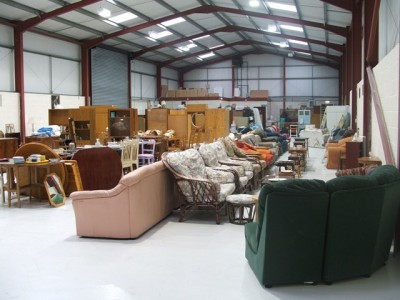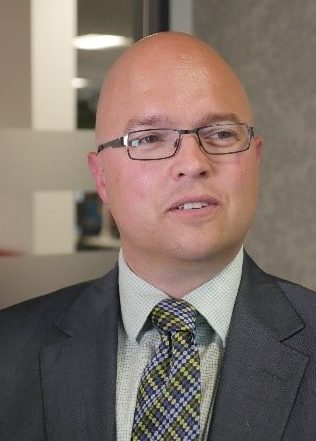Mariam Bajulaiye and Dr Adam Read have developed this joint article by drawing on pointers from previous household re-use and repair technical research projects delivered on behalf of local authorities across England.
How circular economy strategies can influence socially useful innovation
via cradle to cradle models
Introduction
At a public lecture(1) in Cambridge in the United Kingdom, an industry leader referred to the circular economy as a broad concept with a likeness to practices implemented by his grandparents – basically a world where nothing goes to waste.
A formal definition by the Ellen MacArthur Foundation(2) defines the Circular Economy as a framework for an economy that is restorative and regenerative by design. Technical cycles within this concept recover and restore products, components and materials through strategies like re-use, repair, refurbishment, remanufacture or (in the last resort) recycling. Re-use, repair and remanufacture are processes that keep products and resources in use for as long as possible.
The Circular Economy as a framework for an economy has been described as restorative and regenerative by design
Re-use is defined as any recovery operation by which products or components that have become waste are used again for the same purpose for which they were conceived (Article 3(f), revised Waste Framework Directive). Reuse can occur in the following forms:
Direct re-use: No repair work is required to bring the item into nearly new condition e.g. refillable glass bottle;
Refurbishment: Means to redecorate or to make clean or bright e.g. washing clothing materials before sale;
Repair: The correction of specified faults in a product of an end of life product before it is put back into service;
Remanufacturing: A re-use option that requires the total dismantling of a product and the restoration and replacement of its major components. It is the practice of taking end-of-life goods and re-engineering them back to as-new condition with a warrant to match. It concentrates on activities higher in the value chain than re-use.
Local authorities across England and Wales have regeneration statements aiming to address issues to a challenging integrated programme of activity which takes advantage of key assets and tackles constraints to economic growth. Thereby, investing in people through skills development and by supporting local residents to access and maintain employment opportunities. The circular economy strategies to be discussed in this article highlights the opportunities implemented during previous research projects via collaboration between local government departments such as regeneration and waste to address socio-economic challenges by creating circular economy entrepreneurial opportunities.
Environmental context
An analysis of bulky waste streams demonstrates that if products are collected appropriately, there are avenues to increase household product re-use by diverting waste away from landfill thereby reducing the costs of managing the Local Authority areas waste and provide a complementary income to business activities. Circular economy initiatives have the potential to divert materials away from landfill as identified from these projects. For example, an options appraisal conducted for the Leicestershire Waste Partnership(3) identified a need to
bridge the product repair infrastructural gap by increasing large and small waste electrical and electronic equipments (WEEE) repair and refurbishment through the improvement of the existing repair infrastructure.

Diversion of bulky waste from residual waste can be part of the circular economy
These initiatives are essential locally because naturally occurring elements are critical to our daily lives, but they are in limited supply. According to the Royal Society of Chemistry, many of the elements used in consumer tech exist in the earth in tiny proportions, and the processes needed to mine and refine them come at considerable environmental cost(4).
Furthermore, the technical research for Durham County Council(5) identified service options to trail bulky waste collections for re-use, refurbishment and repair across six categories of materials: furniture, textiles, WEEE, fixtures & fittings, garden & outdoor and a mixed category. In order for these schemes to succeed, central coordination was identified as essential to help understand the resource and cost implications from these trials, support to be provided on joint initiatives such as the delivery of a re-use communications campaign which will require technical expertise and financial support to be realised.
Socio-economic context
The opportunities for circular initiatives explored on behalf of WRAP for the Norfolk and Suffolk Re-use Partnership(6) identified joint initiatives across multiple sectors to increase the collection of suitable products for reuse, repair, refurbishment and remanufacture. The circular economy framework offers a closed loop approach where waste is used as a resource thereby creating circular business initiatives that would stimulate local economic growth through job creation and skills development especially for young people.
The re-use organisations engaged via these projects provided existing practical work based training with evidence of social and economic benefits. The joint working scenarios amongst organisations in the re-use network could also strengthen procurement opportunities for work related tenders or funding initiatives between multiple players across public, private, housing and the third sector. The research outcomes such as four year action plans and two year communication plans were designed to increase household product re-use by diverting waste away from landfill thereby reducing the costs of managing the Local Authority areas waste and provided complementary income to the business activities of the social enterprises.
Social constructs are embedded within the economic benefits of household product re-use, repair, refurbishment and remanufacture.
Social constructs are embedded within the economic benefits of household product re-use, repair, refurbishment and remanufacture. The circular economy framework offers a closed loop approach where waste is seen as a resource. A report(7) published by WRAP in 2015, estimated that by 2030 the waste & resource efficiency sector, a priority area to help achieve UK net zero GHG emissions by 2050, could create over half a million jobs, reduce unemployment by over 100,000 and potentially offset around 18% of the expected future losses in skilled employment.
The opportunities for circular initiatives explored on behalf of WRAP for the Norfolk and Suffolk Re-use Partnership identified joint initiatives across multiple sectors to increase the collection of suitable products for reuse, repair, refurbishment and remanufacturing. This research focused on overcoming the barriers to household product re-use by driving stakeholder ability to provide sustainable re-use services by increasing the material supply through concepts such as product sharing for textiles; mobile repair hub for a group of re-use organisations; retail outlets for shabby-chic items; and selling goods for a % fee for partner re-use organisations.
Embedded Carbon
An article by Stefan Schalteggera and Maria Csutora in the Journal of Cleaner Production (volume 36, November 2012) states that the global nature of greenhouse gas emissions as well as increasing climate change impacts requires improved ways to anticipate and fulfil new information requirements and provide guidance on how to use the evolving accounting approaches for transparency, accountability and decision-making in governments, companies, academia and non-profit organisations. This is an area of investment for skilled technical experts pioneering the circular models for implementation, to influence transparent data sharing, monitoring and reporting using environmental management accounting framework such as Wastedataflow.
The basis for carbon accounting has already commenced
The basis for carbon accounting has already commenced, in 2008/09, the bulky waste research implemented on behalf of WRAP for Kent County Council identified provisional WRAP/REalliance figures on the carbon impact of re-use. The CO2 savings from reusing bulky waste are considerable as each tonne of furniture and WEEE reused saves approximately 2.7 and 8.6 tonnes of CO2 respectively. Measuring diverted carbon through product re-use highlights the importance of the circular economy strategies on the UK’s journey towards net zero as detailed in our recent CIWM article(8).
Policy interventions that can be adopted to promote product re-use include individual producer responsibility, financial incentives and regulations. The study emphasised that while social and environmental barriers mainly concern donors and some stakeholder re-use organisations; it is the economic barrier that drives stakeholder ability to provide sustainable re-use services to the society. This economic barrier should be put into consideration when designing circular economy frameworks for re-use, refill and repair services. Also, as outlined
in the EU’s circular economy action plan9 building a stronger partnership with social businesses in Africa to maximise the benefits of the green transition and the circular economy may be beneficial.

Co-author: Mariam Bajulaiye
There is obviously a cost implication to implement new and /or build on existing re-use, repair, refurbishment and remanufacturing strategies. However, to achieve benefits of sustainable development, the tonnage throughput for the product supply and demand must be sufficient; a value has to be put to the waste disposal cost and simple metrics of carbon accounting for different household products should be measured. Last but not the least, an international policy for products exported for re-use from the UK should implement monitoring the value and standardising the duration before the end of life for the reused goods to address issues of illegal product dumping on emerging economies.
About the authors

Co-author: Dr Adam Read
Mariam Ajadi Bajulaiye is a project management professional and social enterprise adviser with over twelve years of experience within the environmental sector. She predominantly works in the United Kingdom as a Chartered Waste Manager focusing on resource efficiency initiatives.
Dr Adam Read is external affairs director at SUEZ Recycling & Recovery UK. He has been in the sector for almost 25 years specialising in municipal waste management strategy, recycling services, contracts and consultation, and continues to support UK service innovation. He is is the CIWM’s incoming President, taking up the reigns in June 2021.
Notes:
1. Public Lecture: Cambridge Creative Circular Plastics Centre. Held on 5th December 2019. The Circular Economy: More than a buzz word?
St. John’s Old Divinity School, Cambridge.
2. Ellen MacArthur Foundation: Rethink the Future. 2013. Towards the Circular Economy. Volume 1.
3. Leicestershire Re-use Case Study. Laying the Foundation to double Re-use. 3rd February 2015.
http://www.wrap.org.uk/content/leicestershire-re-use-case-study
4. Royal Society of Chemistry Website: https://www.rsc.org/new-perspectives/sustainability/elements-in-danger/
How the circular economy strategies can influence socially useful innovation via cradle to cradle models.
5. Durham Re-use Case Study. Network Expansion Delivers more Re-use. 3rd February 2015. http://www.wrap.org.uk/content/durham-reuse-case-study-0
6. Norfolk Re-use Case Study: How a Partnership Approach has helped build momentum and inspired new re-use initiatives. 3rd February
2015. http://www.wrap.org.uk/content/norfolk-re-use-case-study-1
7. WRAP Website: http://www.wrap.org.uk/category/what-we-offer/ reports How the circular economy strategies can influence socially useful innovation via cradle to cradle models.
8. Mariam Ajadi Bajulaiye and Dr Adam Read. CIWM Journal, Issue 11. Impacts of the Circular Economy Strategies on the UK’s journey
towards Net Zero. September / October 2020.
9. European Commission. Circular Economy Action Plan, 2020.
The post ‘Influencing innovation through a circular economy’ appeared first on letsrecycle.com.
Source: letsrecycle.com Waste Managment


